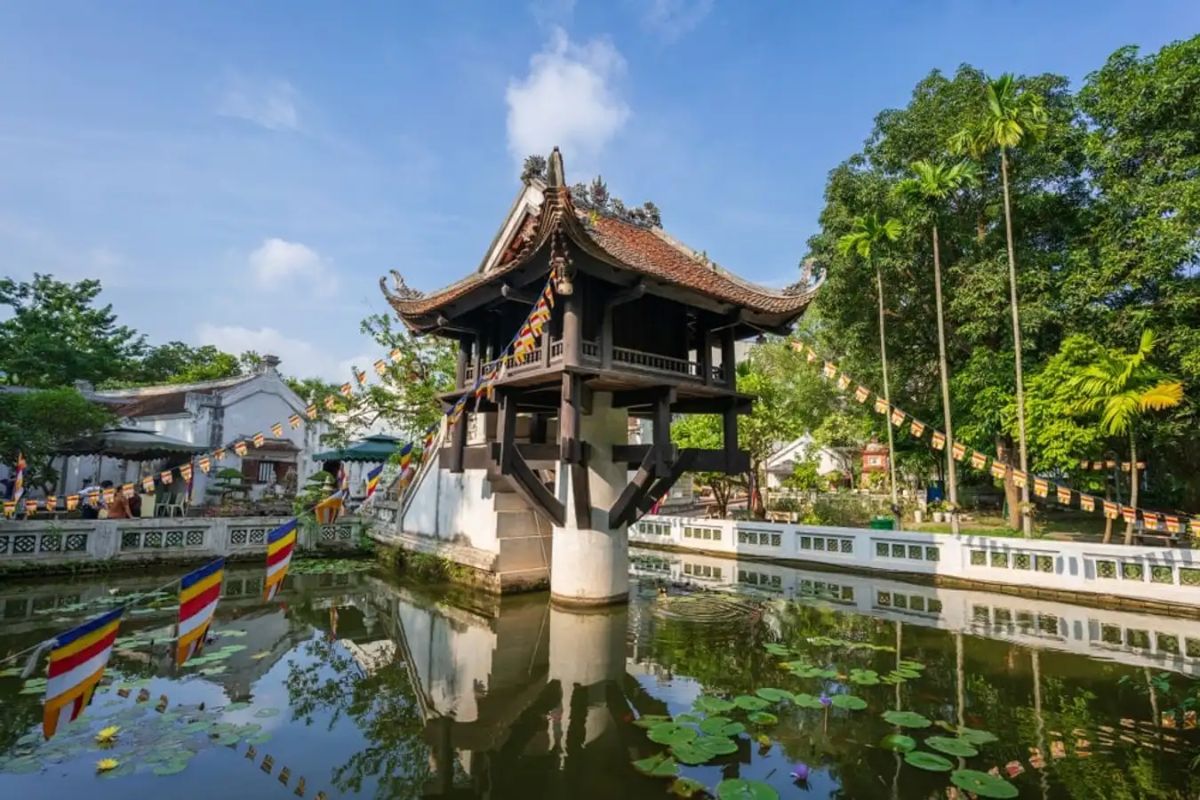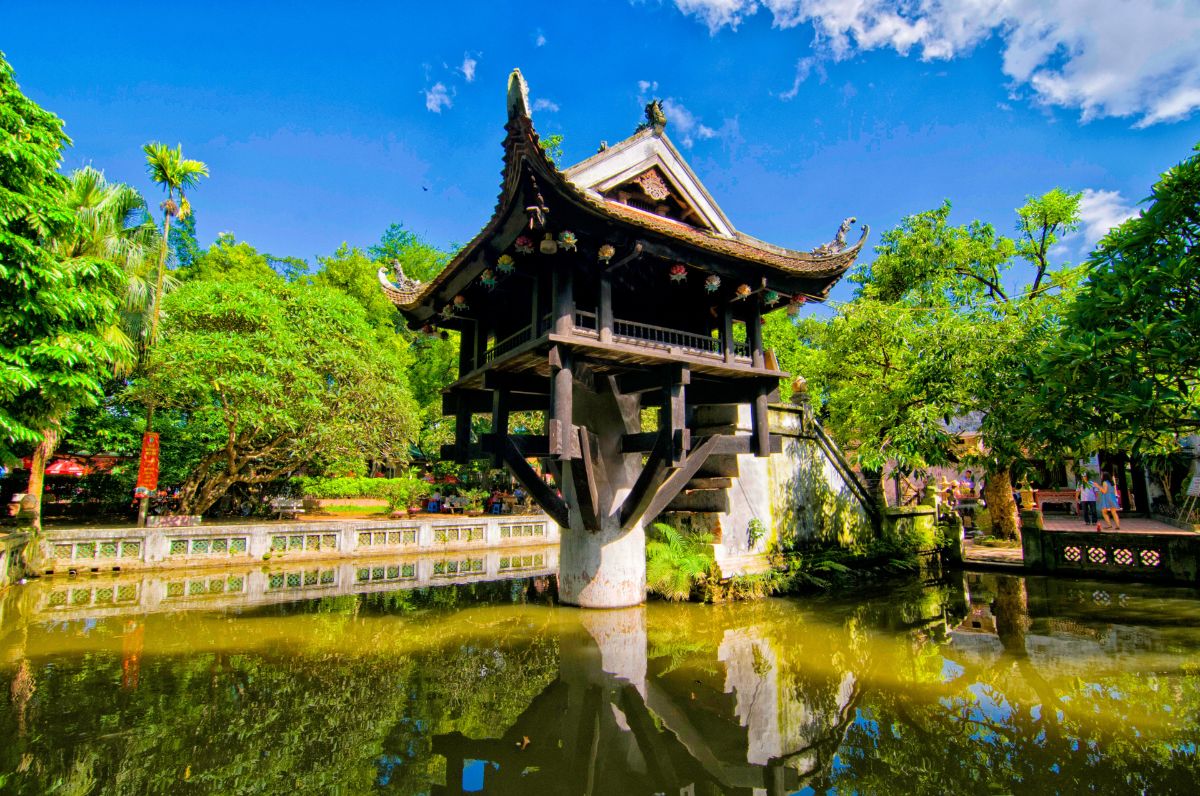One Pillar Pagoda - A Symbol of Vietnam's Culture and History
The One Pillar Pagoda, also known as Diên Hựu Pagoda, is one of the most unique and renowned architectural works in Vietnam. Located in the heart of Hanoi, the pagoda serves not only as a sacred place for worship but also as a cultural and historical icon that attracts millions of domestic and international visitors. With its distinctive design and profound significance, the One Pillar Pagoda has become a source of pride for the Vietnamese people
History of Construction
The One Pillar Pagoda was built in 1049 during the reign of King Lý Thái Tông. According to legend, the king had a dream in which he saw the Bodhisattva Avalokiteshvara seated on a lotus throne, inviting him to join her.
Inspired by this vision, the king ordered the construction of the pagoda, designed to resemble the dream’s imagery, as an expression of gratitude and a prayer for peace and prosperity for the people. The name "Diên Hựu" signifies "lasting blessings."
Unique Architecture
The pagoda's most remarkable feature is its "one pillar" design, which supports the entire structure, symbolizing a lotus flower emerging from the water. The pagoda is built on a single stone pillar, with a shrine dedicated to the Bodhisattva Avalokiteshvara on top. The surrounding lotus pond enhances the serene and harmonious atmosphere, blending the architectural masterpiece with nature.
The architecture of the pagoda is not only visually captivating but also deeply symbolic. The lotus, a representation of purity and enlightenment in Buddhism, illustrates the ability to rise above all adversities. The combination of sculptural art, construction techniques, and spiritual elements makes the One Pillar Pagoda a priceless masterpiece.
Cultural and Historical Value
The One Pillar Pagoda is more than just a piece of architecture; it is a repository of cultural and historical values. Over the centuries, the pagoda has undergone numerous renovations while maintaining its original essence. Notably, it was destroyed during wartime and rebuilt in 1955.
Today, the pagoda is a destination for many Buddhists and international tourists who come to pray for peace, admire its ancient beauty, and explore a significant part of Vietnam's storied past. In 2012, the pagoda was recognized by the Asian Records Organization as "the most unique architectural pagoda," affirming its position on the global cultural map.
The One Pillar Pagoda is not only a distinctive cultural symbol of Hanoi but also a source of pride for the Vietnamese people. With its unique architecture, long-standing history, and profound spiritual significance, the pagoda serves as a place to foster faith and as a bridge between the past and the present. Visiting the One Pillar Pagoda is not merely a physical journey but an exploration of the core cultural and spiritual values of Vietnam.


















![[LIVE] Engage2Earn: Save our PBS from Trump](https://cdn.bulbapp.io/frontend/images/c23a1a05-c831-4c66-a1d1-96b700ef0450/1)





![[ℕ𝕖𝕧𝕖𝕣] 𝕊𝕖𝕝𝕝 𝕐𝕠𝕦𝕣 𝔹𝕚𝕥𝕔𝕠𝕚𝕟 - And Now What.... Pray To The God Of Hopium?](https://cdn.bulbapp.io/frontend/images/79e7827b-c644-4853-b048-a9601a8a8da7/1)


















